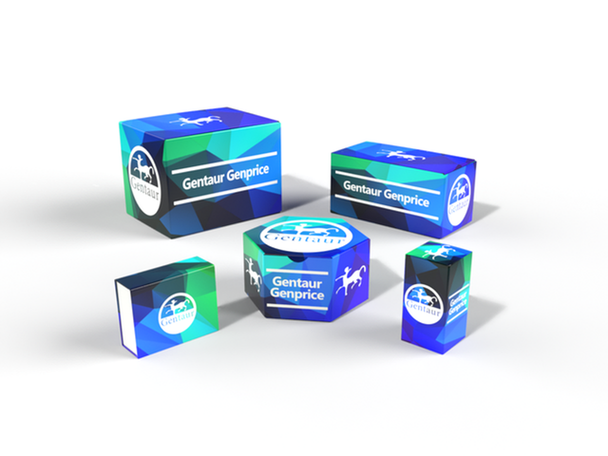Description
NDUFA1 Antibody | 23-512 | Gentaur UK, US & Europe Distribution
Host: Rabbit
Reactivity: Human, Mouse, Rat
Homology: N/A
Immunogen: Recombinant fusion protein containing a sequence corresponding to amino acids 1-70 of human NDUFA1 (NP_004532.1) .
Research Area: Cancer, Neuroscience, Signal Transduction
Tested Application: WB
Application: WB: 1:500 - 1:2000
Specificiy: N/A
Positive Control 1: MCF-7
Positive Control 2: Mouse kidney
Positive Control 3: Mouse heart
Positive Control 4: Rat brain
Positive Control 5: N/A
Positive Control 6: N/A
Molecular Weight: Observed: 14kDa
Validation: N/A
Isoform: N/A
Purification: Affinity purification
Clonality: Polyclonal
Clone: N/A
Isotype: IgG
Conjugate: Unconjugated
Physical State: Liquid
Buffer: PBS with 0.02% sodium azide, 50% glycerol, pH7.3.
Concentration: N/A
Storage Condition: Store at -20˚C. Avoid freeze / thaw cycles.
Alternate Name: CI-MWFE, MC1DN12, MWFE, ZNF183, NADH dehydrogenase [ubiquinone] 1 alpha subcomplex subunit 1, NADH dehydrogenase (ubiquinone) 1 alpha subcomplex, 1, 7.5kDa, NADH-ubiquinone oxidoreductase MWFE subunit, NADH:ubiquinone oxidoreductase (complex 1) , complex I MWFE subunit, type I dehydrogenase
User Note: Optimal dilutions for each application to be determined by the researcher.
BACKGROUND: The human NDUFA1 gene codes for an essential component of complex I of the respiratory chain, which transfers electrons from NADH to ubiquinone. It has been noted that the N-terminal hydrophobic domain has the potential to be folded into an alpha-helix spanning the inner mitochondrial membrane with a C-terminal hydrophilic domain interacting with globular subunits of complex I. The highly conserved two-domain structure suggests that this feature is critical for the protein function and might act as an anchor for the NADH:ubiquinone oxidoreductase complex at the inner mitochondrial membrane. However, the NDUFA1 peptide is one of about 31 components of the 'hydrophobic protein' (HP) fraction of complex I which is involved in proton translocation. Thus the NDUFA1 peptide may also participate in that function.






